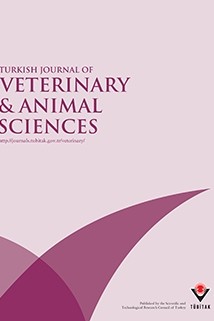
Turkish Journal of Veterinary and Animal Sciences
Yazarlar: Alma CARRASCOSA, Alejan De La PEÃ'A, Lilia GUTIERREZ, Hector SUMANO
Konular:-
Anahtar Kelimeler:Enrofloxacin,Enro-C,Hamster,Pharmacokinetics/pharmacodynamics,Tissue concentrations,Staphylococcus aureus,Leptospira interrogans,Escherichia coli
Özet: Pharmacokinetics (PK), pharmacodynamics (PD), and PK/PD ratios of a new solvate of enrofloxacin (enrofloxacin hydrochloride-dihydrate; enro-C), were studied in hamsters. Enrofloxacin from Baytril1397904493 5% (enroR) served as the reference preparation. Two groups of 60 Syrian golden hamsters were intramuscularly injected individually with 10 mg/kg of enroR or with enro-C. Tissue and serum samples were obtained for 72 h; enrofloxacin concentrations were determined by HPLC with UV detection. Ninety percent minimum inhibitory concentrations (MIC90) were determined for strains of methicillin-resistant Staphylococcus aureus, Leptospira interrogans, and Escherichia coli. All PK variables were statistically different between groups (P < 0.01). CMAX of enrofloxacin for enro-C was 17.3 μg/mL and it was 2.6 μg/mL for enroR. AUC was considerably higher for enro-C (459.2 μg/mL h vs. 19.9 μg/mL h). There were no statistically significant differences in MIC90 values between enroR and enro-C. Tissue concentrations of enro-C in all cases were higher and remained above the MIC for longer periods than those of enroR. Relevant PK/PD ratios for enrofloxacin (AUC/MIC ? 125 and CMAX > MIC = 10-12) are consequently superior for enro-C. Given the outstanding PK/PD ratios of enro-C, this new moiety is proposed as a possible solution when high tissue concentrations of enrofloxacin are necessary.